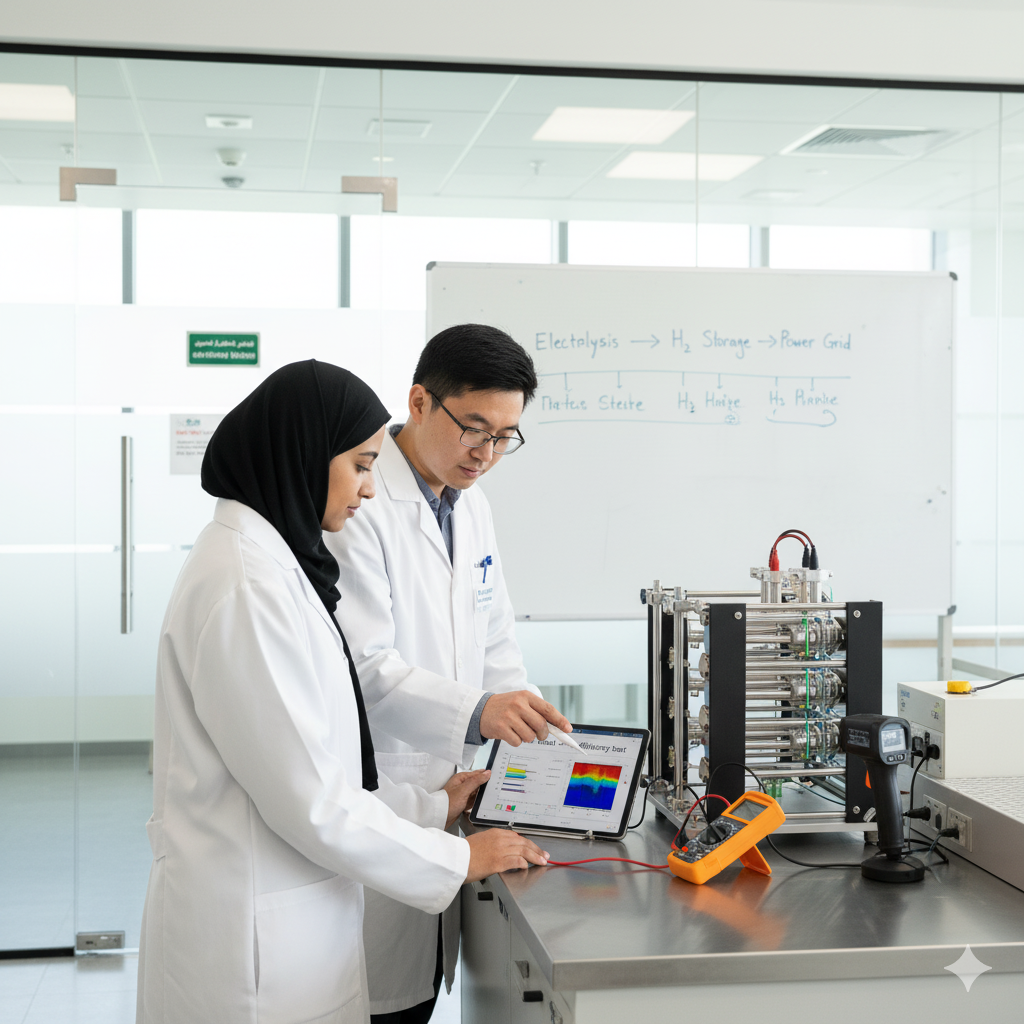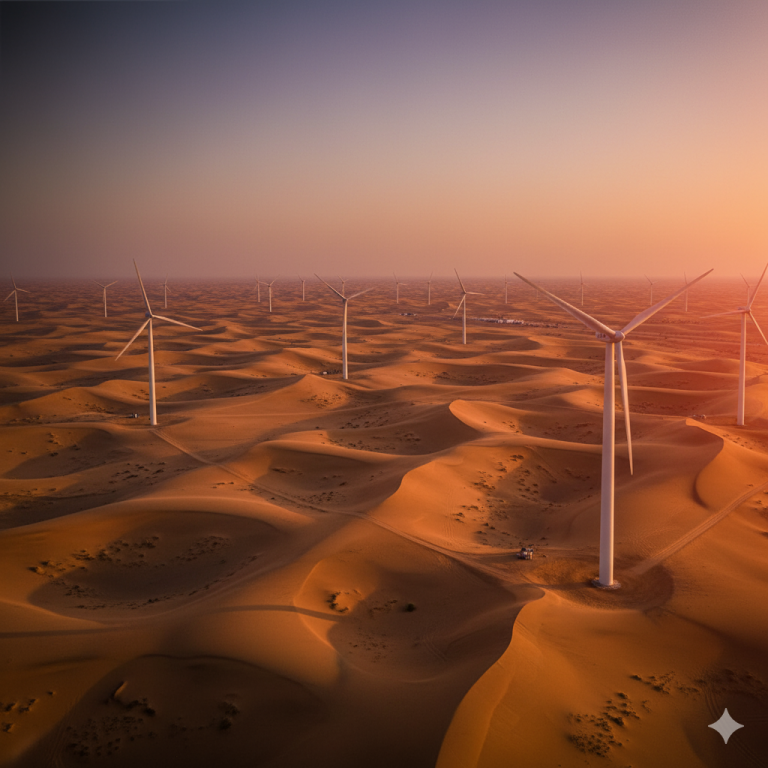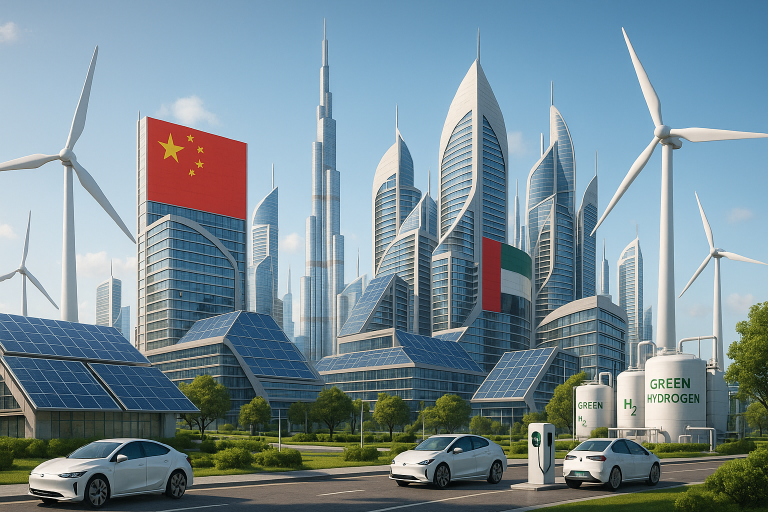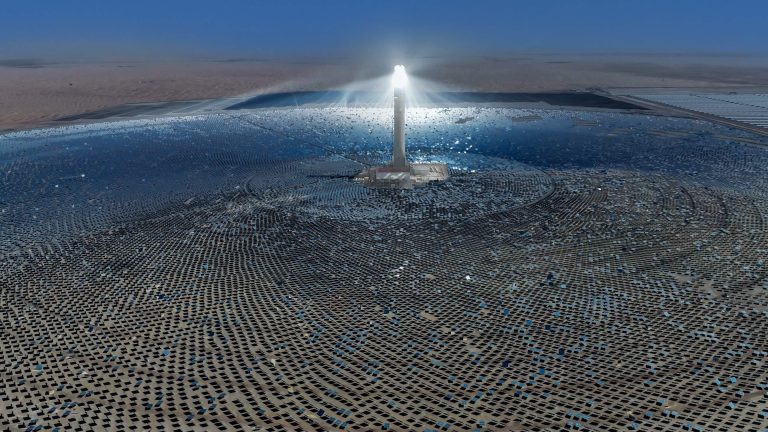The Innovation Ecosystem: Fostering a Culture of R&D in China-UAE Energy Cooperation
In an era defined by rapid technological advancement and an urgent global imperative for sustainable energy, the traditional geopolitical chessboard is witnessing a fascinating realignment. Amidst this flux, the burgeoning partnership between China and the United Arab Emirates stands out as a compelling narrative of strategic foresight and mutual ambition. Far from a mere transactional relationship rooted in historical oil trade, this alliance is evolving into a sophisticated innovation ecosystem, meticulously cultivated through strategic partnerships, substantial R&D investments, and a shared, forward-looking vision for a sustainable energy future. This article will delve into the industrial perspective, trace the historical trajectory, and project the future outlook of this dynamic cooperation, highlighting how both nations are moving beyond conventional energy ties to embrace a new paradigm of renewables and advanced technologies.
Historical Foundations and Strategic Alignment
The genesis of the China-UAE relationship in the energy sector was, predictably, anchored in the robust trade of oil and gas. For decades, China, as a rapidly industrializing nation, sought reliable energy supplies, while the UAE, a major hydrocarbon producer, found a ready market for its resources. This foundational commercial link laid the groundwork for a deeper, more multifaceted engagement.
A pivotal moment arrived in 2013 with the launch of China’s ambitious Belt and Road Initiative (BRI). The BRI, a colossal infrastructure and investment project, found a significant resonance with the UAE’s own strategic goals of economic diversification and energy transition. The UAE, recognizing the potential for synergy, saw the BRI not just as a conduit for Chinese investment but as a framework for broader energy interconnection and market integration. This alignment quickly translated into concrete projects. For instance, the China National Petroleum Corp (CNPC) and Abu Dhabi National Oil Co (ADNOC) formalized their collaboration through the Al Yasat project agreement, marking CNPC’s entry as a strategic partner in Abu Dhabi’s vital energy assets [2]. This early success underscored the mutual benefits inherent in their burgeoning partnership.
Further solidifying this collaboration, 2017 saw the signing of a significant cooperation deal for an onshore oil concession, which positioned CNPC as the asset leader for the North-East Bab fields [2]. This move was not merely about resource extraction; it represented a deeper trust and integration of operational capabilities, enhancing the strategic depth of their energy partnership. The relationship transcended simple buyer-seller dynamics, evolving into a more integrated model of co-development and shared responsibility.
The evolution of this partnership reached a new zenith in 2018 when China-UAE bilateral relations were elevated to a comprehensive strategic partnership. This diplomatic upgrade provided a robust framework for expanded cooperation across various sectors, including energy. In the same year, CNPC and ADNOC extended their agreements to encompass the Umm Shaif & Nasr and Lower Zakum offshore fields, thereby establishing a comprehensive cooperation framework in the UAE that spanned both onshore and offshore operations and integrated the entire exploration and development industry chain [2]. This holistic approach signaled a long-term commitment to shared prosperity and technological advancement in the energy domain.
The strategic alignment continued to deepen into the current decade. In May 2024, the governments of China and the UAE issued a joint statement, explicitly emphasizing strengthened cooperation in renewable energy, oil, and natural gas. This was swiftly followed, just two months later, by a comprehensive strategic cooperation agreement between CNPC and ADNOC. This agreement was expansive, covering the entire oil and gas industry chain—from exploration, research, and technology exchange to engineering services, refining, petrochemicals, market sales, international gas project cooperation, and new energy collaboration [2]. Such an all-encompassing accord underscores the profound strategic alignment and the shared vision for a diversified and sustainable energy future that now characterizes the China-UAE partnership. This historical progression reveals a deliberate and continuous effort to build a resilient and forward-looking energy relationship, moving from initial commercial ties to a deeply integrated strategic alliance focused on innovation and sustainability.
Industrial Perspective: Pillars of Current Cooperation
The industrial landscape of China-UAE energy cooperation is characterized by a dual approach: a continued robust engagement in traditional hydrocarbon sectors, coupled with an aggressive pivot towards renewable energy and advanced technologies. This dual strategy reflects both nations’ pragmatic energy needs and their ambitious long-term sustainability goals.
In the traditional energy sector, collaboration remains strong and strategically vital. CNPC and ADNOC, for instance, continue their joint ventures in critical oil and gas exploration, development, and trade. The operations in the Umm Shaif & Nasr and Lower Zakum offshore fields are prime examples of this enduring partnership, where Chinese expertise complements UAE’s rich resources [2]. Beyond resource extraction, this collaboration extends to significant technological exchange and services. CNPC has leveraged its specialized technological advantages in low-permeability carbonate reservoirs to enhance production efficiency and reduce operational costs in fields like North-East Bab [2]. This mutual transfer of knowledge and operational best practices underscores a mature industrial partnership that seeks continuous optimization.
However, the most transformative aspect of this industrial cooperation lies in the renewable energy transition. China has emerged as an undisputed global leader in clean energy supply chains, dominating the manufacturing of solar modules and various wind components [1]. This industrial might has made China an essential partner for Gulf states, including the UAE, which are aggressively pursuing ambitious renewable energy targets. The UAE, seeking the most efficient and cost-effective components for its burgeoning clean energy projects, frequently sources these from China [1].
This industrial synergy is evident in major Chinese investments and co-development initiatives within the UAE’s renewable landscape. Jinko Solar, the world’s largest module manufacturer, has not only led consortiums winning significant solar tenders in Saudi Arabia but also co-developed the monumental 1.2 GWp Al Sweihan project in Abu Dhabi, one of the largest single-site photovoltaic projects globally [1]. Furthermore, the Silk Road Fund’s substantial acquisition of a 49% stake in ACWA Power Renewable Energy Holding (ACWA Power RenewCo) in 2019, a major Saudi renewable energy project holding company with significant assets in the UAE, highlights the depth of Chinese financial commitment to the region’s green transition. Total Chinese investment in ACWA projects now exceeds an impressive $10 billion [1].
The focus of this renewable energy collaboration is broad, encompassing solar, wind, and increasingly, green hydrogen projects. Entities like Masdar, the UAE’s flagship renewable energy company, are actively collaborating with Chinese energy firms on these initiatives, directly supporting the UAE’s ambitious Net Zero by 2050 goal [3]. This concerted effort is not just about deploying existing technologies but also about fostering innovation in these critical areas.
Crucially, the cooperation extends to upstream investment and localized manufacturing. Both the UAE and Saudi Arabia are strategically attracting joint ventures to establish domestic manufacturing facilities, aiming to build indigenous capabilities and diversify their economies. A notable example is the partnership between Saudi Arabia’s Public Investment Fund (PIF) and China’s Longi Solar, one of the world’s largest module manufacturers, as well as PIF’s collaboration with Foxconn for electric vehicle development [1]. These initiatives are designed to localize value chains, create jobs, and foster a self-sustaining innovation ecosystem within the Gulf.
The role of state-owned enterprises (SOEs) from both nations is particularly significant in this context. These entities, often characterized by access to lower-cost capital and longer investment horizons, are uniquely positioned to undertake large-scale, long-term projects that private firms might find less attractive [1]. This shared characteristic between Chinese and Gulf SOEs facilitates a level of strategic collaboration that is less common with Western counterparts, who are notably less present in the broader Gulf renewable landscape, with French firms like EDF and Engie being notable exceptions [1]. This institutional alignment allows for a more patient and strategic approach to industrial development, laying robust foundations for future growth and innovation.
Fostering a Culture of R&D and Innovation
The strategic energy partnership between China and the UAE is increasingly characterized by a profound commitment to fostering a vibrant culture of Research and Development (R&D) and innovation. This commitment is not merely rhetorical; it is manifested through concrete joint initiatives, the deliberate construction of innovation ecosystems, and robust financial mechanisms designed to propel both nations into a leadership position in future energy technologies.
Joint Research and Development Initiatives form the bedrock of this innovation drive. Collaboration extends into cutting-edge areas within the traditional oil and gas sector, such as advanced reservoir simulation, drilling acceleration techniques, and the development of smart oilfields. A prime example is the application of “Broadband, Wide-Azimuth, High-Density” seismic exploration technology, which provides critical technical support for ADNOC’s efforts to enhance production in mature fields and unlock new resources [2]. Beyond hydrocarbons, the partnership is aggressively expanding into next-generation technologies. Significant collaborations are emerging in Artificial Intelligence (AI) and other advanced technologies, with entities like Abu Dhabi’s G42, a leading AI and cloud computing company, partnering with Chinese tech giants to advance machine learning, big data, and smart city solutions [3]. These joint ventures are not only about technology transfer but also about co-creation and mutual learning, establishing shared intellectual property and expertise.
The Building of Innovation Ecosystems is a deliberate strategy pursued by both governments. Both China and the UAE have implemented comprehensive policies and strategies to support R&D and innovation. The UAE Energy Strategy 2050, for instance, outlines ambitious targets for renewable energy and energy efficiency, creating a fertile ground for innovation [3]. Similarly, China’s substantial investments in R&D, particularly in clean energy technologies, which were 2.5 times the global average in 2023, underscore its national commitment to technological leadership [4]. This supportive policy environment is complemented by significant efforts in talent development and knowledge transfer. ADNOC representatives regularly visit China to gain insights into CNPC’s technical and management expertise, while CNPC senior managers engage with ADNOC’s core business units, fostering a continuous exchange of best practices [2]. Furthermore, CNPC actively supports the UAE’s Emiratization policy, promoting the recruitment and cultivation of local talent, thereby building indigenous R&D capabilities within the UAE [2]. Academic and institutional collaborations are also flourishing, including discussions around co-developing nuclear technology research centers and exploring IV generation reactor technology, indicating a long-term vision for shared scientific advancement [5].
Crucially, Financial Mechanisms play a pivotal role in underpinning this innovation ecosystem. Funds like China’s Silk Road Fund have been instrumental in facilitating large-scale investments, such as its significant stake in ACWA Power Renewable Energy Holding [1]. More recently, a landmark $5 billion partnership between the UAE and China was forged to boost AI, renewable energy, and infrastructure, specifically targeting solar, wind, and green hydrogen projects [3]. These financial commitments provide the necessary capital for ambitious R&D projects, infrastructure development, and the scaling up of innovative solutions, ensuring that promising research can translate into tangible industrial applications. This robust financial backing signals a long-term strategic investment in a shared innovative future, moving beyond traditional energy transactions to cultivate a self-sustaining ecosystem of technological advancement and collaborative R&D.
Future Outlook: Towards a Sustainable and Integrated Energy Future
The trajectory of China-UAE energy cooperation points towards an increasingly integrated and sustainable future, extending far beyond the traditional confines of energy to encompass broader economic and technological spheres. This evolving partnership is poised to redefine regional and global energy dynamics.
Firstly, the expanding scope of collaboration is evident. What began as a strategic alliance in oil and gas is rapidly diversifying into a comprehensive partnership that includes renewable energy, AI, advanced manufacturing, and infrastructure development. The $5 billion partnership to boost AI, renewable energy, and infrastructure is a testament to this holistic approach, signaling a mutual commitment to innovation-driven growth across multiple sectors [3]. This diversification not only strengthens bilateral ties but also positions both nations at the forefront of emerging industries.
Secondly, the strategic importance of the UAE as a gateway for Chinese investments into the Middle East and North Africa (MENA) region cannot be overstated. With its advanced infrastructure, stable economic environment, and strategic geographical location, the UAE offers China a crucial hub for expanding its economic footprint. Concurrently, China serves as an invaluable market and technology provider for the UAE, offering cutting-edge solutions and substantial investment capital necessary for its ambitious diversification and Net Zero goals [1, 3]. This symbiotic relationship creates a powerful engine for regional development and technological diffusion.
Thirdly, the global implications of this partnership are significant. The recent inclusion of the UAE and Saudi Arabia into BRICS is expected to substantially increase multilateral engagements, providing Gulf states with enhanced legitimacy and access to new markets through their association with China, a major global power [1]. This expanded platform allows for greater coordination on global issues, particularly in addressing climate change and promoting sustainable development. Both nations are actively involved in initiatives like the Oil and Gas Decarbonization Charter, demonstrating a shared commitment to mitigating environmental impact while ensuring energy security [2]. As China seeks to strengthen partnerships with traditional U.S. allies in the region, and potentially looks to Gulf financial sponsors for Belt and Road projects, the geopolitical landscape of energy cooperation is set for further evolution.
However, this promising future is not without its challenges and opportunities. Navigating geopolitical shifts, adapting to rapid technological advancements, and responding to dynamic market forces will require continuous strategic foresight and agile policy-making. Yet, the established framework of trust, mutual benefit, and shared vision provides a robust foundation for overcoming these hurdles. The continuous investment in R&D, the cultivation of talent, and the strategic alignment of national development plans will be crucial in harnessing the opportunities presented by the global energy transition.
Conclusion
The journey of China-UAE energy cooperation, from its foundational ties in traditional hydrocarbons to its current manifestation as a sophisticated innovation ecosystem, is a compelling testament to strategic foresight and mutual ambition. What began as a pragmatic exchange of resources has blossomed into a comprehensive partnership, meticulously cultivated through shared investments in R&D, the deliberate fostering of innovation, and a collective vision for a sustainable future.
This article has highlighted how both nations are actively moving beyond conventional energy transactions, embracing renewables and advanced technologies with remarkable zeal. The industrial collaborations, ranging from advanced oilfield technologies to pioneering solar and green hydrogen projects, underscore a commitment to both energy security and environmental stewardship. The robust R&D initiatives, supported by substantial financial mechanisms and a conducive policy environment, are not merely about technological adoption but about co-creation and the cultivation of a vibrant culture of innovation.
The China-UAE energy partnership stands as a powerful example of how strategic alignment and sustained collaboration can drive transformative change. It is a relationship built on mutual benefit, where China provides technological leadership and investment, and the UAE offers strategic access, capital, and a commitment to diversification. As the world grapples with the complexities of energy transition and climate change, the innovation ecosystem forged between China and the UAE offers a positive and enduring model for international cooperation, poised to leave an indelible mark on the global energy landscape and the future of R&D.







